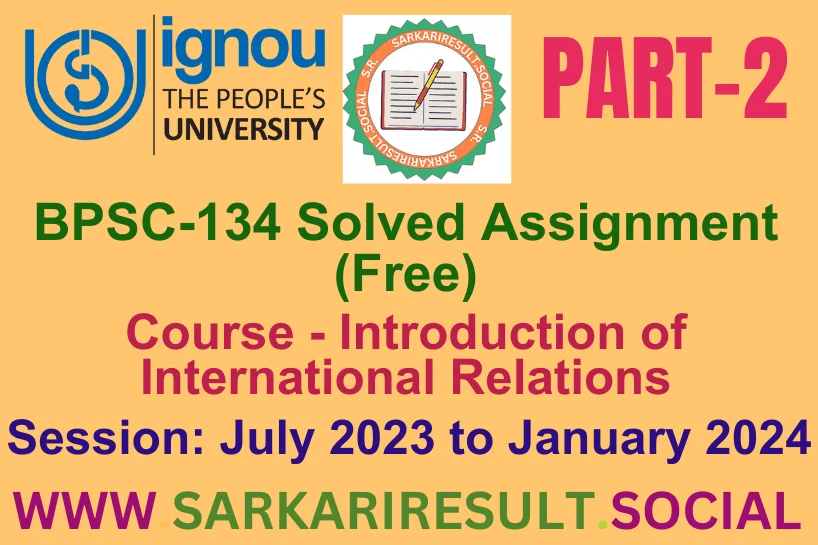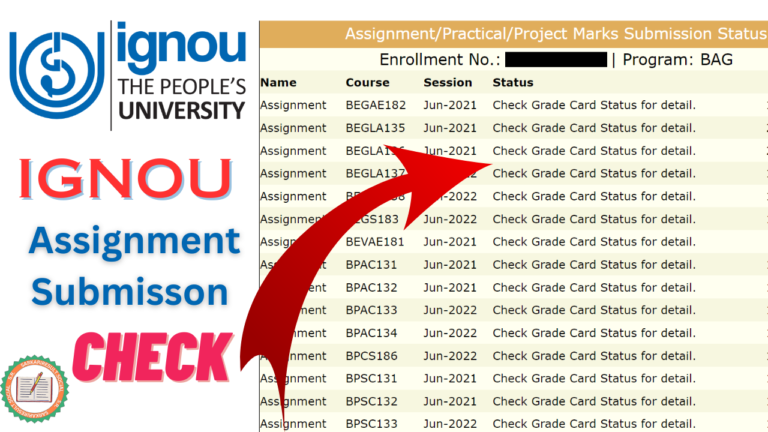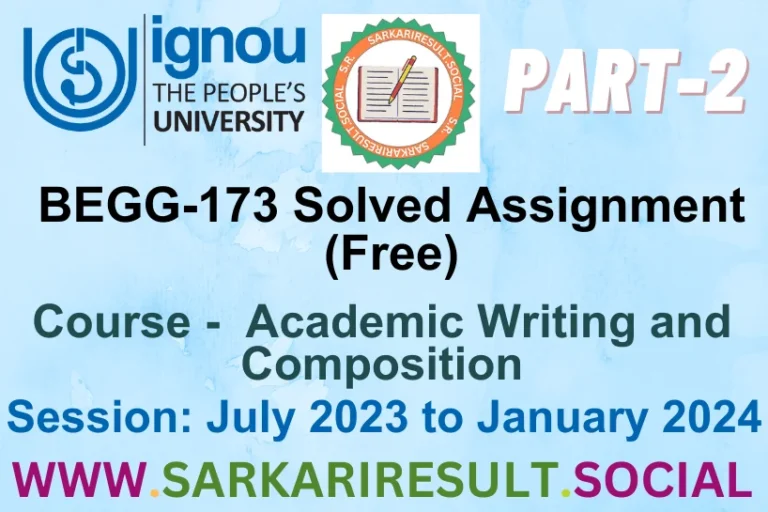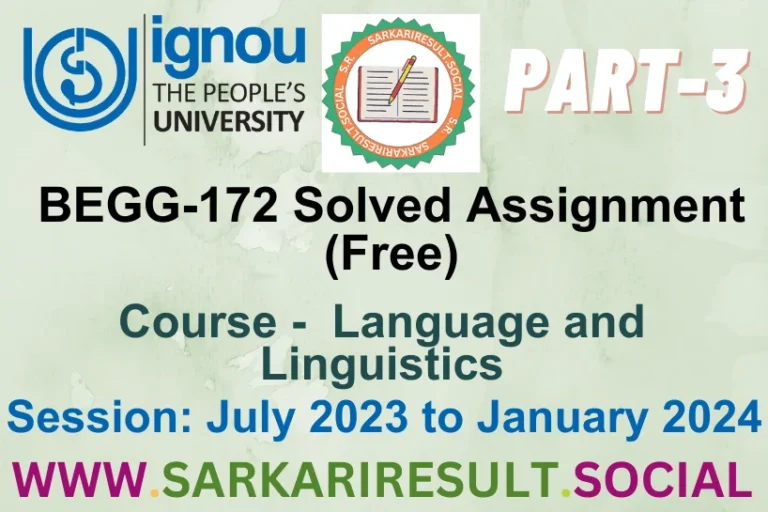BPSC 134 SOLVED IGNOU ASSIGNMENT FREE PART 2

Welcome to the BPSC 134 SOLVED IGNOU ASSIGNMENT FREE PART 2 TMA. Assignment – II streamlines your approach with concise answers to three pivotal questions. In about 250 words each, discuss the characteristics of various types of powers in the international system, critique modernisation theory, and explain different versions of Constructivism. Our short and focused responses provide a straightforward path for grasping these critical aspects of international relations, ensuring a smooth and successful completion of your assignments.

Answer the following questions in about 250 words each.
Q.1 Discuss characteristics of various types of powers in the international system.
Ans. In the international system, various types of powers exhibit distinct characteristics, influencing global dynamics. Here are key features of different types of powers:
1. Economic Power:
– Characteristics:
– Wealth and Resources: Economic power stems from a nation’s wealth and resources, impacting its ability to influence global markets.
– Trade Dominance: Economically powerful nations often dominate international trade, shaping economic policies and standards.
– Financial Institutions: Influence over international financial institutions, like the International Monetary Fund (IMF) and World Bank, signifies economic power.
2. Military Power:
– Characteristics:
– Defense Capability: Military power is rooted in a nation’s defense capabilities, including technology, personnel, and strategic assets.
– Deterrence: The possession of advanced military technology and a strong defense deters potential adversaries.
– Global Presence: Nations with military power often have a significant global military presence and alliances.
3. Political Power:
– Characteristics:
– Influence in International Organizations: Politically powerful nations exert influence within international organizations, shaping policies and decisions.
– Diplomacy: Political power is reflected in a nation’s diplomatic reach, alliances, and negotiating prowess.
– Soft Power: Beyond coercion, political power includes soft power elements, like cultural influence and diplomatic initiatives.
4. Soft Power:
– Characteristics:
– Cultural Influence: Soft power is rooted in a nation’s cultural appeal, including media, arts, and education.
– Ideological Attraction: Nations with soft power attract others through shared values, ideas, and lifestyles.
– Public Diplomacy: Engaging in public diplomacy initiatives enhances soft power by fostering positive perceptions globally.
5. Technological Power:
– Characteristics:
– Innovation: Technological power is linked to a nation’s capacity for innovation and technological advancements.
– Cyber Capabilities: Nations with strong technological power excel in cyber capabilities, influencing information warfare.
– Strategic Industries: Leading in strategic industries like artificial intelligence and space technology enhances technological power.
6. Regional Power:
– Characteristics:
– Regional Influence: Regional powers wield influence within their geographic spheres, often exerting leadership.
– Security Dynamics: Regional powers play key roles in shaping security dynamics and resolving regional conflicts.
– Economic Integration: Regional powers may lead in regional economic integration initiatives, enhancing their overall influence.
7. Emerging Power:
– Characteristics:
– Rapid Growth: Emerging powers experience rapid economic growth and increasing influence on the global stage.
– Global Aspirations: Aspiring for global leadership, emerging powers often seek greater roles in international organizations and alliances.
– Diverse Capacities: Emerging powers exhibit diverse capacities, combining economic, military, and political elements.
In the international system, the interplay of these different types of powers contributes to the complex web of global relations, with nations often leveraging multiple sources of power to enhance their standing and pursue strategic objectives.
Q.2 Critique of modernisation theory.
Ans. Modernization theory, developed in the mid-20th century, aimed to explain the development trajectory of societies as they transition from traditional to modern forms. However, it has faced significant critiques for oversimplifying the complex processes of societal transformation and carrying ethnocentric biases.
1. Linear Progression:
– Critique:
– Modernization theory assumes a linear progression, implying that societies follow a predetermined path from traditional to modern. This oversimplified view neglects the diversity of developmental paths and cultural variations.
2. Cultural Bias:
– Critique:
– The theory carries a Western-centric bias, assuming that Western values and institutions represent the pinnacle of development. It tends to view non-Western societies as ‘backward’ or ‘traditional,’ neglecting the richness of diverse cultural practices.
3. Assumption of Homogeneity:
– Critique:
– Modernization theory often assumes homogeneity within societies, overlooking internal variations, conflicts, and inequalities. It neglects the dynamics of power and the fact that development impacts different groups within a society differently.
4. Economic Determinism:
– Critique:
– Economic factors are given disproportionate weight in modernization theory. It assumes that economic growth automatically leads to societal development, neglecting the role of political, social, and cultural factors.
5. Neglect of Historical Context:
– Critique:
– Modernization theory neglects historical context and the impact of colonial legacies on development. It does not account for how historical processes shape the current conditions of societies.
6. Static View of Tradition:
– Critique:
– The theory tends to portray tradition as static and inhibitive, overlooking the dynamic nature of cultural practices. It does not recognize that traditions can adapt and contribute to societal development.
7. Role of Global Power Structures:
– Critique:
– Modernization theory neglects the role of global power structures and international relations in shaping the development of nations. It does not adequately address how global economic and political systems contribute to global inequalities.
8. Neglect of Social Inequality:
– Critique:
– The theory often overlooks social inequalities within societies and assumes that economic growth automatically benefits all members. In reality, development can exacerbate existing inequalities.
Conclusion:
While modernization theory contributed to early discussions on development, its limitations have become apparent. Critiques highlight the need for a more nuanced and context-specific understanding of development that acknowledges the diversity of pathways, considers historical legacies, and incorporates a broader range of factors beyond economic growth.
Q.3 Explain different versions of Constructivism.
Ans. Constructivism is a perspective in international relations that emphasizes the role of ideas, norms, and identities in shaping state behavior. Different versions of constructivism have emerged, offering nuanced perspectives on how these factors influence international interactions.
1. Classical Constructivism:
– Key Features:
– Classical constructivism, associated with scholars like Alexander Wendt, focuses on the role of shared beliefs and intersubjective understandings in shaping state behavior.
– It argues that the nature of anarchy in international relations is socially constructed, and states can cooperate based on shared norms and identities.
2. Postmodern Constructivism:
– Key Features:
– Postmodern constructivism challenges the notion of fixed, stable identities and argues that identities are fluid and socially constructed.
– It emphasizes the importance of language and discourse in shaping perceptions and identities in international relations.
3. Normative Constructivism:
– Key Features:
– Normative constructivism, associated with Martha Finnemore and Kathryn Sikkink, focuses on the role of international norms and institutions.
– It argues that norms, such as human rights or environmental protection, shape state behavior by influencing their preferences and actions.
4. Identity Constructivism:
– Key Features:
– Identity constructivism, influenced by scholars like Peter Katzenstein, emphasizes the role of identities in shaping state behavior.
– It argues that how states perceive themselves and others influences their actions, with cultural and historical factors playing a crucial role.
5. Agent-Structure Constructivism:
– Key Features:
– Agent-structure constructivism, proposed by Wendt, attempts to bridge the gap between individual agency and systemic structures.
– It argues that both agents (states) and structures (international system) are mutually constitutive, influencing each other.
6. Critical Constructivism:
– Key Features:
– Critical constructivism draws on poststructuralist and critical theory perspectives to analyze power relations and inequalities.
– It questions dominant narratives and structures, highlighting how language and discourse contribute to the perpetuation of power imbalances.
7. English School Constructivism:
– Key Features:
– The English School of International Relations incorporates constructivist elements by emphasizing shared norms and institutions as key components of international society.
– It explores the concept of an international society with common values and rules.
Conclusion:
Constructivism, in its various forms, provides a rich framework for understanding the role of ideas, norms, and identities in shaping international relations. These versions offer different insights into the complex interplay between the social construction of reality and state behavior in the global arena.
Also See This: BPSC 134 SOLVED IGNOU ASSIGNMENT FREE PART 3






